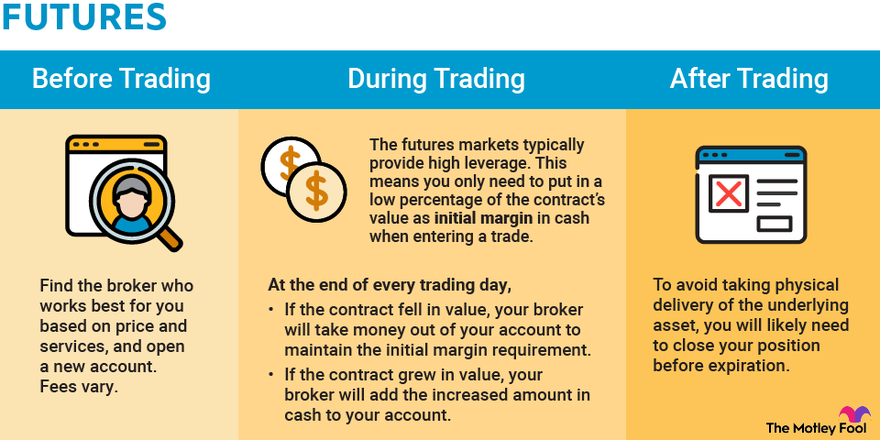
Finding the cheapest place to buy crypto is crucial for maximizing your investment potential. With a plethora of cryptocurrency exchanges vying for your attention, navigating the complexities of fees, security measures, and supported cryptocurrencies can be overwhelming. This guide aims to equip you with the knowledge and tools to make informed decisions when entering the world of digital assets.
We’ll delve into the different types of exchanges, explore factors that influence crypto prices, and provide a comprehensive comparison of popular platforms. Additionally, we’ll cover alternative methods for buying crypto, essential security practices, and strategies for managing risks.
Understanding Crypto Exchanges
Cryptocurrency exchanges are platforms that facilitate the buying, selling, and trading of digital assets like Bitcoin, Ethereum, and other cryptocurrencies. They connect buyers and sellers, allowing them to exchange cryptocurrencies for fiat currencies (like USD or EUR) or other cryptocurrencies. Understanding the different types of exchanges and their features is crucial for making informed decisions about your cryptocurrency investments.
Types of Cryptocurrency Exchanges
Cryptocurrency exchanges can be broadly categorized into three main types: centralized, decentralized, and peer-to-peer.
- Centralized Exchanges (CEXs): These are the most common type of exchanges, acting as intermediaries between buyers and sellers. They hold users’ crypto assets in their own wallets, offering convenience and user-friendly interfaces. Popular examples include Binance, Coinbase, and Kraken.
- Decentralized Exchanges (DEXs): Unlike CEXs, DEXs operate without a central authority. They rely on smart contracts and blockchain technology to facilitate trades directly between users. This eliminates the need for intermediaries, offering greater privacy and security. Uniswap and PancakeSwap are prominent examples of DEXs.
- Peer-to-Peer (P2P) Exchanges: These platforms connect buyers and sellers directly, allowing them to negotiate prices and trade cryptocurrencies without involving an exchange. P2P exchanges often provide greater flexibility but may require more effort to find reliable trading partners. LocalBitcoins and Paxful are well-known P2P exchanges.
Fees Charged by Exchanges
Cryptocurrency exchanges typically charge fees for various services, including:
- Trading Fees: These are charged on each trade, usually a percentage of the transaction value. Fees can vary depending on the exchange, trading volume, and the specific cryptocurrency being traded.
- Deposit Fees: Some exchanges may charge fees for depositing funds, especially when using fiat currencies.
- Withdrawal Fees: Exchanges typically charge fees for withdrawing funds, both in crypto and fiat currencies. These fees can vary depending on the withdrawal method and the cryptocurrency involved.
- Other Fees: Some exchanges may also charge additional fees for specific services like margin trading, futures trading, or staking.
Security Measures Implemented by Exchanges
Security is paramount in the cryptocurrency industry, as exchanges are prime targets for hackers. Exchanges employ various security measures to protect user funds and data, including:
- Multi-Signature Wallets: This technology requires multiple keys to authorize transactions, making it more difficult for hackers to gain access to funds.
- Two-Factor Authentication (2FA): This security measure requires users to provide an additional authentication factor, such as a code sent to their mobile device, in addition to their password, making it harder for unauthorized individuals to access accounts.
- Cold Storage: This method involves storing a significant portion of cryptocurrency offline in secure, physically isolated locations, making it inaccessible to hackers.
- Regular Security Audits: Reputable exchanges undergo regular security audits by independent third parties to identify vulnerabilities and ensure robust security practices.
- Insurance: Some exchanges offer insurance policies to protect user funds in case of theft or hacking incidents.
Factors Influencing Crypto Prices
The price of cryptocurrencies, like Bitcoin and Ethereum, can fluctuate wildly. Several factors influence these price changes, making the crypto market dynamic and unpredictable. Understanding these factors is crucial for investors and traders to make informed decisions.
Market Sentiment
Market sentiment refers to the overall feeling or attitude of investors toward a particular asset. In the crypto market, this sentiment is driven by factors like media coverage, social media discussions, and the general perception of the industry’s future. Positive sentiment can lead to increased demand and higher prices, while negative sentiment can result in decreased demand and lower prices.
For example, during the 2021 bull run, widespread media coverage and positive social media discussions fueled a surge in Bitcoin’s price. Conversely, negative news events like regulatory crackdowns or security breaches can trigger sell-offs and price drops.
News Events, Cheapest place to buy crypto
News events, both positive and negative, can significantly impact crypto prices. Positive news, such as regulatory approvals, partnerships, or technological advancements, can boost investor confidence and lead to price increases. Conversely, negative news, such as hacks, scams, or regulatory crackdowns, can erode investor confidence and cause prices to plummet.
The 2017 Bitcoin price surge was partially fueled by positive news events, such as the launch of Bitcoin futures contracts and the growing adoption of cryptocurrency by major companies. However, the market also experienced significant dips due to negative events, such as the Mt. Gox hack in 2014, which resulted in the loss of millions of dollars worth of Bitcoin.
Regulatory Changes
Regulatory changes are another significant factor affecting crypto prices. Governments around the world are still grappling with how to regulate cryptocurrencies, and any new regulations can have a profound impact on the market. Positive regulations, such as clear guidelines for crypto exchanges or tax benefits for crypto investors, can boost investor confidence and lead to price increases. However, negative regulations, such as bans or restrictions, can dampen investor enthusiasm and cause prices to decline.
In 2017, the Chinese government’s crackdown on cryptocurrency exchanges led to a significant drop in Bitcoin’s price. Conversely, the recent approval of Bitcoin futures contracts by the US Securities and Exchange Commission (SEC) was seen as a positive development for the industry and contributed to Bitcoin’s price surge.
Choosing the Right Exchange: Cheapest Place To Buy Crypto

Selecting the appropriate cryptocurrency exchange is crucial for a seamless and secure trading experience. Each exchange offers a unique set of features, fees, and supported cryptocurrencies, catering to different user needs and preferences.
Exchange Comparison
This table compares popular cryptocurrency exchanges based on their features, fees, and supported cryptocurrencies:
| Exchange | Features | Fees | Supported Cryptocurrencies |
|—|—|—|—|
| Binance | Spot trading, margin trading, futures trading, staking, and a wide range of cryptocurrencies | Maker fees: -0.02% to 0.01%, Taker fees: 0.04% to 0.1% | Over 600 cryptocurrencies |
| Coinbase | User-friendly interface, regulated exchange, and support for fiat currencies | Trading fees: 0.5% to 1.49% | Over 100 cryptocurrencies |
| Kraken | Advanced trading features, high liquidity, and a wide range of cryptocurrencies | Trading fees: 0.16% to 0.26% | Over 150 cryptocurrencies |
| Gemini | Secure and regulated exchange, focused on institutional investors, and support for fiat currencies | Trading fees: 0.25% | Over 50 cryptocurrencies |
Pros and Cons of Each Exchange
Binance
Pros:
* Wide range of cryptocurrencies: Binance supports over 600 cryptocurrencies, providing a vast selection for traders.
* Low fees: Binance offers competitive trading fees, making it attractive for high-volume traders.
* Advanced trading features: Binance offers margin trading, futures trading, and staking, catering to experienced traders.
* Excellent user experience: Binance has a user-friendly interface and mobile app.
Cons:
* Security concerns: Binance has been subject to security breaches in the past, raising concerns about the safety of user funds.
* Regulatory scrutiny: Binance has faced regulatory scrutiny in several jurisdictions, which may impact its operations in the future.
Coinbase
Pros:
* User-friendly interface: Coinbase is known for its user-friendly interface, making it suitable for beginners.
* Regulated exchange: Coinbase is a regulated exchange, providing a higher level of security and compliance.
* Support for fiat currencies: Coinbase allows users to deposit and withdraw fiat currencies, making it convenient for buying and selling crypto.
Cons:
* High fees: Coinbase charges higher trading fees compared to other exchanges.
* Limited cryptocurrency selection: Coinbase supports a limited number of cryptocurrencies compared to other exchanges.
Kraken
Pros:
* Advanced trading features: Kraken offers advanced trading features, including margin trading, futures trading, and stop-loss orders.
* High liquidity: Kraken has high liquidity, ensuring quick and efficient trades.
* Wide range of cryptocurrencies: Kraken supports over 150 cryptocurrencies, providing a diverse selection for traders.
Cons:
* Steep learning curve: Kraken’s interface can be complex for beginners.
* Limited customer support: Kraken’s customer support can be slow and unresponsive.
Gemini
Pros:
* Secure and regulated exchange: Gemini is a secure and regulated exchange, focused on institutional investors.
* Support for fiat currencies: Gemini allows users to deposit and withdraw fiat currencies, making it convenient for buying and selling crypto.
Cons:
* Limited cryptocurrency selection: Gemini supports a limited number of cryptocurrencies compared to other exchanges.
* Higher fees: Gemini charges higher trading fees compared to other exchanges.
Buying Crypto Safely and Securely

Protecting your digital assets is paramount when venturing into the world of cryptocurrency. Just like you wouldn’t leave your physical wallet lying around, safeguarding your crypto requires careful consideration. This section will guide you through the crucial aspects of secure crypto storage and purchasing.
Crypto Wallets: The Foundation of Security
Crypto wallets are digital containers that store your private keys, which are essential for accessing and managing your cryptocurrency. Choosing the right wallet is vital for ensuring the security of your assets.
Types of Crypto Wallets
- Hardware Wallets: These are physical devices resembling USB drives that store your private keys offline. They are considered the most secure option as they are not susceptible to online threats. Examples include Ledger Nano S and Trezor Model T.
- Software Wallets: These are digital wallets installed on your computer, mobile device, or web browser. They offer convenience but are less secure than hardware wallets as they are vulnerable to malware and hacking. Popular software wallets include Exodus, MetaMask, and Mycelium.
- Paper Wallets: These are physical pieces of paper containing your private keys printed as QR codes. They offer the highest level of security by storing your keys offline and completely disconnected from the internet. However, they are prone to physical damage and loss.
Secure Crypto Purchase Process
Here’s a step-by-step guide on how to buy crypto securely using a chosen exchange:
- Choose a Reputable Exchange: Select a reliable exchange with a good reputation, strong security measures, and a user-friendly interface. Consider factors like transaction fees, supported cryptocurrencies, and regulatory compliance.
- Verify Your Identity: Most exchanges require identity verification to comply with Know Your Customer (KYC) and Anti-Money Laundering (AML) regulations. This typically involves providing personal information and documents like a driver’s license or passport.
- Fund Your Account: Deposit funds into your exchange account using a secure payment method like a bank transfer or credit card. Ensure that the payment method is supported by the exchange and that you understand any associated fees.
- Select a Cryptocurrency: Choose the cryptocurrency you wish to purchase. Research the cryptocurrency’s fundamentals, use cases, and market trends before making a decision.
- Place an Order: Enter the amount of cryptocurrency you want to buy and confirm the order. You can choose between market orders (buying at the current market price) or limit orders (buying at a specific price).
- Transfer to Your Wallet: Once the purchase is complete, transfer the cryptocurrency to your chosen wallet. Ensure that you have the correct wallet address and that the transfer is secure.
It’s crucial to remember that your private keys are the ultimate key to your cryptocurrency. Keep them safe and secure, and never share them with anyone.
Alternative Ways to Buy Crypto
While traditional cryptocurrency exchanges are the most common method for purchasing digital assets, there are several alternative ways to acquire crypto, each with its own set of advantages and disadvantages. These alternative methods offer greater flexibility and accessibility, catering to specific needs and preferences.
Peer-to-Peer Marketplaces
Peer-to-peer (P2P) marketplaces connect buyers and sellers directly, eliminating the need for a centralized exchange. This decentralized approach offers greater privacy and control over transactions, as users can negotiate prices and payment methods directly with each other.
- Advantages:
- Increased Privacy: P2P platforms generally do not require KYC (Know Your Customer) verification, enhancing user anonymity.
- Greater Flexibility: Users can choose their preferred payment methods, including cash, bank transfers, or even gift cards.
- Potentially Lower Fees: P2P platforms often charge lower fees compared to centralized exchanges.
- Disadvantages:
- Security Risks: P2P transactions involve greater risk as buyers and sellers interact directly, increasing the potential for scams or fraud.
- Limited Liquidity: P2P platforms typically have lower trading volumes compared to exchanges, making it challenging to find large amounts of cryptocurrency.
- Potential for Price Discrepancies: Prices on P2P platforms can vary significantly depending on the seller and their location.
Popular P2P Marketplaces:
- LocalBitcoins: A well-established platform with a global user base, offering a wide range of cryptocurrencies and payment methods.
- Paxful: A popular P2P platform that allows users to buy and sell crypto using various payment methods, including gift cards.
- Remitano: A global P2P marketplace that facilitates secure and fast cryptocurrency transactions.
Cryptocurrency ATMs
Cryptocurrency ATMs (ATMs) provide a convenient and immediate way to buy and sell crypto using cash. These machines are increasingly becoming more common, offering users a quick and easy way to access cryptocurrencies without needing to create an account on an exchange.
- Advantages:
- Convenience: ATMs allow users to buy crypto instantly using cash, eliminating the need for bank transfers or online verification.
- Anonymity: While some ATMs may require basic identification, they generally offer greater privacy compared to exchanges.
- Accessibility: ATMs are located in public places, making them easily accessible to a wider range of users.
- Disadvantages:
- Higher Fees: ATM fees can be significantly higher compared to exchanges, as they often include a premium for the convenience and anonymity.
- Limited Availability: ATM locations are still relatively limited, especially in certain regions.
- Potential for Scams: As with any cash-based transaction, there is a risk of scams or fraud when using ATMs.
Popular ATM Locations:
- Coin ATM Radar: A website that provides a comprehensive directory of cryptocurrency ATM locations worldwide.
- Bitcoin ATM Map: A map-based platform that allows users to locate nearby Bitcoin ATMs.
Understanding Crypto Trading Strategies
Cryptocurrency trading strategies are various approaches that traders use to profit from price fluctuations in the crypto market. These strategies vary in their risk levels, timeframes, and complexity, offering a diverse range of options for traders with different goals and risk appetites. Understanding these strategies and their associated risks and rewards is crucial for making informed trading decisions.
Day Trading
Day trading involves buying and selling cryptocurrencies within a single trading day, aiming to capitalize on short-term price movements. Day traders typically focus on technical analysis and chart patterns to identify potential entry and exit points.
Day trading can be highly profitable, but it also comes with significant risks.
- High Volatility: Cryptocurrencies are known for their volatility, which can lead to rapid price swings and substantial losses if trades are not executed correctly.
- Fast-Paced Environment: Day trading requires constant monitoring of the market and quick decision-making, which can be stressful and demanding.
- Transaction Fees: Frequent trading can lead to accumulating transaction fees, which can eat into profits.
Example: A day trader might buy Bitcoin at $20,000 and sell it at $20,200 within the same day, earning a profit of $200. However, if the price drops to $19,800 before they can sell, they would incur a loss of $200.
Swing Trading
Swing trading involves holding cryptocurrencies for a longer period than day trading, typically from a few days to a few weeks, aiming to capture larger price swings. Swing traders use a combination of technical and fundamental analysis to identify potential entry and exit points.
Swing trading offers a balance between risk and reward compared to day trading.
- Lower Volatility: Holding cryptocurrencies for a longer period reduces the impact of short-term price fluctuations, lowering the risk of sudden losses.
- Less Time Commitment: Swing trading requires less constant monitoring than day trading, allowing traders to focus on other activities.
- Potential for Higher Returns: Capturing larger price swings can lead to higher potential returns than day trading.
Example: A swing trader might buy Ethereum at $1,500 and sell it at $1,800 after a few weeks, earning a profit of $300.
Hodling
Hodling is a long-term investment strategy that involves buying and holding cryptocurrencies for an extended period, typically months or years, with the belief that their value will increase over time. Hodlers often focus on the underlying fundamentals of the cryptocurrency, such as its technology, adoption rate, and community support.
Hodling is considered a low-risk strategy, but it also has a lower potential for short-term returns.
- Long-Term Growth Potential: Cryptocurrencies have the potential to appreciate significantly over time, especially those with strong fundamentals.
- Minimal Time Commitment: Hodlers do not need to actively monitor the market or make frequent trading decisions.
- Lower Risk of Short-Term Losses: Holding for the long term reduces the impact of short-term price fluctuations.
Example: An investor might buy Bitcoin at $1,000 in 2013 and hold it until 2021, when its price reached $60,000, earning a significant return on their investment.
Managing Crypto Risks
The cryptocurrency market is known for its volatility and potential for high returns, but it also comes with inherent risks. Understanding these risks and implementing strategies to mitigate them is crucial for any investor.
Market Volatility
Cryptocurrency prices are highly volatile, subject to rapid and unpredictable fluctuations. This volatility can lead to significant losses, especially for short-term traders.
- Factors contributing to volatility: News events, regulatory changes, market sentiment, and technical factors can all influence cryptocurrency prices.
- Mitigation strategies:
- Dollar-cost averaging (DCA): Investing a fixed amount of money at regular intervals, regardless of price fluctuations, can help to reduce the impact of volatility.
- Long-term investment: Holding cryptocurrencies for the long term can help to weather short-term price swings.
- Diversification: Investing in a variety of cryptocurrencies can help to reduce portfolio risk.
Security Breaches
Cryptocurrency exchanges and wallets are vulnerable to security breaches, which can result in the loss of funds.
- Common security threats: Phishing scams, malware attacks, and hacking attempts are some of the common security threats faced by cryptocurrency users.
- Mitigation strategies:
- Use reputable exchanges: Choose exchanges with strong security measures, such as two-factor authentication (2FA) and cold storage.
- Secure your wallets: Use strong passwords, enable 2FA, and avoid storing large amounts of crypto on exchanges.
- Keep your software updated: Regularly update your operating system, antivirus software, and cryptocurrency wallet software to patch security vulnerabilities.
Scams
The cryptocurrency industry is rife with scams, including fraudulent token offerings, Ponzi schemes, and fake exchanges.
- Common scam tactics: Scammers often use social media, email, and other online platforms to lure unsuspecting investors into fraudulent schemes.
- Mitigation strategies:
- Do your research: Before investing in any cryptocurrency, carefully research the project, its team, and its whitepaper.
- Be wary of promises of high returns: If something sounds too good to be true, it probably is. Avoid investing in projects that promise unrealistic returns.
- Use reputable sources of information: Stick to trusted news outlets, forums, and communities for information about cryptocurrencies.
Investing in Crypto

Investing in cryptocurrency can be a potentially rewarding but also risky endeavor. Before diving into the world of crypto investments, it’s crucial to understand the factors involved and develop a sound strategy.
Risk Tolerance and Investment Goals
Your risk tolerance and investment goals are fundamental to making informed decisions.
- Risk Tolerance: How comfortable are you with potential losses? High-risk tolerance might lead you to invest in volatile cryptocurrencies with the potential for significant gains, but also a greater chance of losses. Conversely, lower risk tolerance might favor more established and stable cryptocurrencies.
- Investment Goals: Are you aiming for short-term gains or long-term growth? Short-term goals might involve trading cryptocurrencies frequently, while long-term goals could focus on holding cryptocurrencies for an extended period.
Market Research
Thorough market research is essential for making informed investment decisions.
- Understanding the Technology: Delve into the underlying technology of the cryptocurrencies you’re considering. Research the project’s whitepaper, understand the team behind it, and assess its potential for growth and adoption.
- Analyzing Market Trends: Keep abreast of market trends, including price fluctuations, news events, and regulatory developments. Analyze the factors that influence the value of cryptocurrencies, such as adoption, technological advancements, and investor sentiment.
- Evaluating Project Viability: Consider the project’s overall viability. Assess the team’s expertise, the strength of the community, and the potential for the cryptocurrency to solve real-world problems.
Diversifying Your Crypto Portfolio
Diversification is a key principle in investing, and it applies to cryptocurrencies as well.
- Spreading Investments: Instead of putting all your eggs in one basket, spread your investments across different cryptocurrencies. This reduces your exposure to the risk of any single cryptocurrency experiencing a significant decline.
- Investing in Different Sectors: Consider diversifying across different sectors of the cryptocurrency market. For example, invest in both established cryptocurrencies like Bitcoin and Ethereum and emerging cryptocurrencies with promising potential.
Developing a Personalized Crypto Investment Strategy
A personalized crypto investment strategy is crucial for success.
- Set Clear Goals: Define your investment goals and objectives. Are you aiming for short-term profits, long-term growth, or a combination of both?
- Allocate Resources: Determine how much capital you’re willing to allocate to crypto investments. Start small and gradually increase your investment as you gain experience and confidence.
- Manage Risk: Implement risk management strategies to protect your investments. Consider using stop-loss orders to limit potential losses and diversify your portfolio to reduce exposure to any single cryptocurrency.
- Stay Informed: Continuously update your knowledge about the cryptocurrency market. Stay informed about news events, regulatory developments, and technological advancements that could impact the value of your investments.
Closure
Ultimately, finding the cheapest place to buy crypto is a journey of discovery. By understanding the nuances of different exchanges, evaluating fees, and prioritizing security, you can confidently navigate the ever-evolving crypto landscape. Remember to conduct thorough research, compare options, and choose a platform that aligns with your individual needs and investment goals.
Question Bank
What is the best exchange for beginners?
For beginners, exchanges like Coinbase and Binance are generally recommended due to their user-friendly interfaces and extensive educational resources.
How do I choose a secure wallet?
Prioritize wallets with strong security features, such as multi-factor authentication and offline storage options. Hardware wallets are considered the most secure.
What are the risks associated with crypto investing?
Cryptocurrency markets are volatile, susceptible to scams, and subject to regulatory changes. It’s crucial to understand these risks and implement strategies for mitigation.




